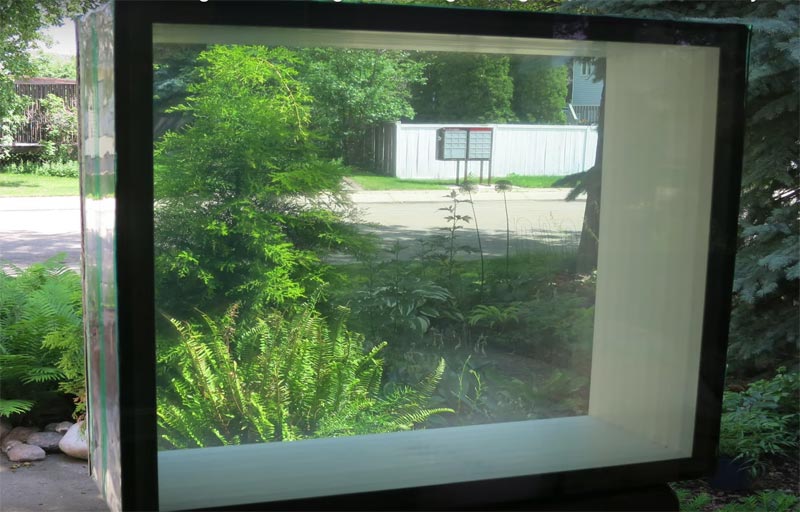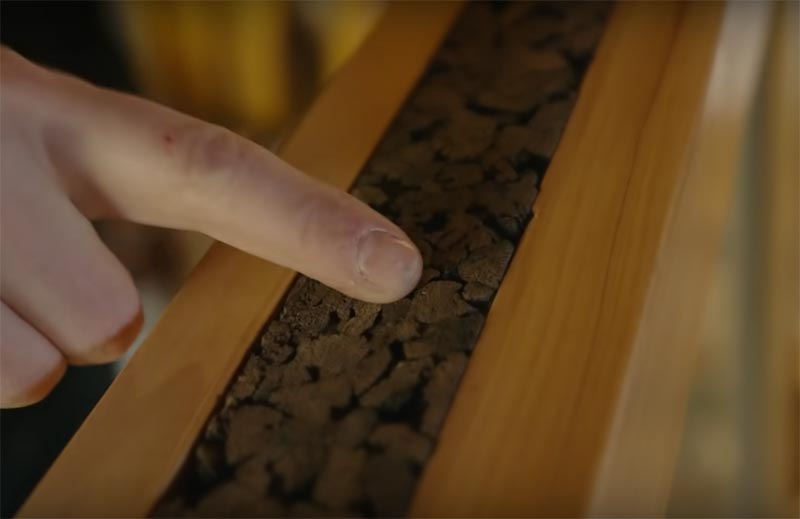The cost of energy-efficient windows varies depending on the manufacturer, window type, and frame, as well as the energy-saving features you want to be installed. For a single hung vinyl window with energy-efficient double-paned glass, the average energy-efficiency window with an Energy Star rating can start as little as $340. You'll also have to pay for installation workers (typically around $39 per hour). Installation expenses for a large energy-efficient casement window with hardwood framing might cost up to $840 per window.
What Are Energy-Efficient Windows?
Energy-efficient windows, also known as energy-saving windows, are designed to keep heated or cooled air from escaping your home. Their improved insulation lowers your home's energy consumption—and thus your bills!—while also making it more pleasant. Below are the aspects that contribute to a window's energy efficiency.

How Much Can You Save with Energy Efficient Windows?
One thing is certain: your home's leaky, aged windows aren't helping your utility bills. Quality double pane energy-saving windows simply outperform single pane windows in terms of energy efficiency. The Department of Energy predicts that simply replacing windows with new windows with greater Energy Star ratings can save you $120 to $470 each year.
Throughout the year, homeowners who install Energy Star windows save an average of 12% on their electricity bills. A consumer that pays $210 per month or $2520 per year will save $25 per month or $302 per year. Depending on the windows you replace and the climate in which you live, you could save even more.
Are Energy-Efficient Windows Worth it?
Many homes already have double-pane windows, and the energy savings from replacing them with ENERGY STAR-rated items is substantially smaller. According to the Department of Energy, a window installation like the one described above will save you between $29 and $122 every year, so it may take you a long time to recoup your initial investment in new windows.
However, energy savings aren't the only factor to consider when determining the value of new windows. New windows also raise the value of your home. Adding new vinyl windows could add up to $12,500 to the value of your home, making them a wise investment if you're getting ready to list your home or want to sell it soon.
Whether or not energy-efficient windows are worthwhile depends entirely on the sort of windows you are replacing. You'll undoubtedly notice a substantial difference in your utility expenditures if you have single-pane windows with warped wood frames, for example. Most residences, though, are unlikely to be in this condition. The majority of the top home window manufacturers will provide energy-saving enhancements.
ENERGY STAR Windows
Looking for the Energy Star badge is one of the quickest and easiest ways to identify energy-efficient windows. Energy Star windows are highly efficient and must meet several requirements to get the designation.
For southern regions, Energy Star windows are designed to keep heat out of the house. Their low U-factor further demonstrates their insulating potential, making them an excellent choice for warmer areas.
Energy Star windows for northern climates are designed to let in infrared light that causes heat generation, so they trap warm air inside your home. These windows are double or triple-paned, and their low U-factor proves their insulating capabilities.
What Makes a Window Energy-Efficient?
There are a few elements that can help you save money in the long term by making your new home windows energy efficient. When a window has many window glass panes – double or triple-paned glass windows, high-quality window frames, Low-E glass coatings, argon or krypton gas poured between window panes, and windowpane spacers placed – it becomes energy efficient. All of these energy-saving elements work together to provide the ideal window for energy savings. Below, we go over each of these energy-saving factors in greater detail:
Window Spacers
When there are spacers between the glass panes on windows that are the perfect distance apart. Non-metal and metal hybrid spacers insulate the edges of the window panes, reducing heat transfer and increasing energy efficiency.
Low-E Glass Coatings
In northern latitudes, when heat gain is preferred, a low-E coating is frequently utilized in the other direction. Although the complete spectrum of light is allowed into the residence to the greatest extent feasible, the heat energy it generates is contained inside. This produces a tremendous greenhouse effect, which helps to keep a house cool.
Low-e or low-emissivity coatings are an efficient technique to keep heat in or out of your home in the winter and summer, respectively. These coatings are intended to regulate the movement of heat energy generated by sunshine. While allowing sunlight to pass through, an exterior low-E coating can block ultraviolet and infrared radiation, in other words, heat from entering your home.
Window Gas Fills
Gas fills between window panes are common in energy-efficient windows, which assist insulate your new home windows. There are non-toxic, odorless, and colorless gases such as argon, krypton, and others that can be filled inside.
Multiple Window Glass Panes
Multiple panes of glass placed together with spacers make up energy-efficient double-pane and triple-paned windows. Air pockets are created between the layers of glass in these multilayer structures, which are sealed shut to prevent any air from entering or escaping. Finally, different gases are injected into them to improve their efficiency.
Energy-efficient windows can be combined with composite, vinyl, fiberglass, and wooden window frames, as well as clad-wood windows, which are extremely energy efficient. The movement of heat will be reduced and your windows will be better insulated, resulting in more efficient heating and cooling in your home.
Quality Window Frame Materials
Energy-efficient windows can be combined with composite, vinyl, fiberglass, and wooden window frames, as well as clad-wood windows, which are extremely energy efficient. The movement of heat will be reduced and your windows will be better insulated, resulting in more efficient heating and cooling in your home. Installing an energy-efficient window is crucial for energy savings, but it won't help much if the window frame isn't as well. Even when equipped with a thermal window break, metal windows are the least efficient. These windows simply transfer heat far too well to be very energy efficient.

Energy Star Tax Credits
An Energy Star tax credit of up to $200 per window and a total of $500 was available until 2014 for anyone installing Energy Star windows in their homes. Although the credit has already expired, there are still additional local incentives available. Customers in western Oregon, Colorado Springs, Fort Collins, and a variety of other regions, for example, are eligible for a mail-in rebate program when they purchase energy-efficient windows. Some regions also provide low-interest loans to utility customers who install energy-efficient windows. Find out about potential incentives and rebates by contacting your local installers and distributors.
Energy Star VT Ratings Windows
A window's VT (visible transmittance) rating indicates how much visible light may flow through it. The VT rating for windows in a darker room, such as a home cinema, should be low, but for brighter places, such as your kitchen windows, you should avoid low VT levels.
Low-e coatings are slightly tinted, and when used in combination with other special glass treatments, they can effectively block a significant amount of light from entering your home. Even when the layers of glass are clear, they can block off a lot of light. As a result, you will lose a lot of free visible light, forcing you to use electric lights more frequently during the day.
Efficiency Windows Benefit Some Homes More Than Others
The energy profile of each home is distinct. Energy-efficient windows make a significant difference in one home but have little effect in another. Audits play a role in this. A home energy audit can help you examine the various aspects of your home that can influence your overall energy consumption—and prioritize the changes you need to make. That way, if you decide to install energy-efficient windows, you won't lose all of the benefits due to leaky seals or insufficient insulation.
Don't overlook the value of a more comfortable and quieter home, which you can have when you replace your windows. That's one perk you can't put a price on!
So Hence, The main point is that energy-efficient windows are a better investment in some homes than in others, especially when combined with other energy-saving upgrades like air sealing and insulation. However, if you currently have double-pane windows, upgrading to ENERGY STAR windows will not save you the most money—especially when compared to the cost-to-value gains of attic insulation, for example.
Energy Star VT Ratings Windows
Low-e coatings are slightly tinted, and when used in combination with other special glass treatments, they can effectively block a significant amount of light from entering your home. Even when the layers of glass are clear, they can block off a lot of light. As a result, you will lose a lot of free visible light, forcing you to use electric lights more frequently during the day.
A window's VT (visible transmittance) rating indicates the amount of visible light that can flow through it. The VT rating on windows in a darker room, such as a home theatre, should be low, while low VT levels should be avoided in brighter spaces, such as your kitchen windows.